Call us:
+1-248-524-0430
15% higher efficiency with Tebis 4.1
The success story of Hauk Modell- und Formenbau GmbH
Company
Hauk Modell- u. Formenbau GmbH
Focus
Series production, Contract manufacturing
Sector
Model making
Mold manufacturing
Published
2023
Moderate- to high-complexity parts
Hauk's specialty is parts of moderate to high complexity. The machining experts can mill dimensions up to 3.5 x 2.5 x 1.5 m.
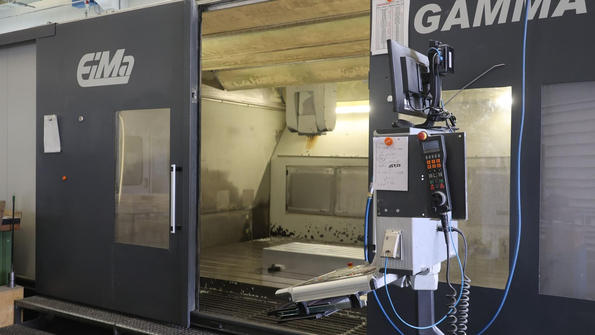
In recent years, the company established a second foothold: contract manufacturing of components in small batches. Hauk's specialty is parts of moderate to high complexity. The machining experts can mill dimensions up to 3.5 x 2.5 x 1.5 m. – Image: Pergler Media
In addition to the polyurethane and epoxy resin block materials and other engineering plastics traditionally used in model making, Hauk's employees have extensive experience and technical expertise in processing aluminum and cast-aluminum alloys, magnesium, fiber-reinforced plastic composites, GFRP, CFRP, carbon, Plexiglas, laminates and resin-densified wood.
They also perform simpler steel machining.
Hauk Modell- und Formenbau is optimally positioned to manufacture new parts with its production capacity: The company's machinery includes Fooke Endura 700 linear and Eima Gamma T 5-axis gantry milling machines, plus a 5-axis POSmill H 800 U and a 3-axis Mazak VTC 300C II milling center.
The parts are manufactured in quantities of 1 to roughly 2,000 units per year. The product spectrum ranges from exterior and interior parts for special vehicle construction and motor sports and components and products for production machining and plant construction to special parts for medical equipment, electric drive systems and innovative aerospace applications.
Optimization to the last millisecond isn’t always the main focus in manufacturing. A high degree of process safety and process stability are often far more important for those responsible in order to ensure consistently reproducible quality in small orders and production lots.
They also perform simpler steel machining.
Hauk Modell- und Formenbau is optimally positioned to manufacture new parts with its production capacity: The company's machinery includes Fooke Endura 700 linear and Eima Gamma T 5-axis gantry milling machines, plus a 5-axis POSmill H 800 U and a 3-axis Mazak VTC 300C II milling center.
The parts are manufactured in quantities of 1 to roughly 2,000 units per year. The product spectrum ranges from exterior and interior parts for special vehicle construction and motor sports and components and products for production machining and plant construction to special parts for medical equipment, electric drive systems and innovative aerospace applications.
Optimization to the last millisecond isn’t always the main focus in manufacturing. A high degree of process safety and process stability are often far more important for those responsible in order to ensure consistently reproducible quality in small orders and production lots.
30 years of success with Tebis CAD/CAM
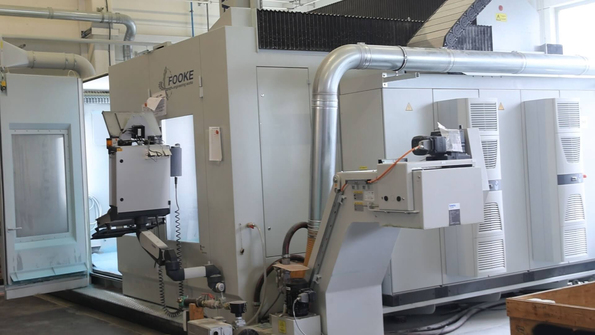
In addition to the polyurethane and epoxy resin block materials and other engineering plastics traditionally used in model making, Hauk's employees have extensive experience and technical expertise in processing aluminum and cast-aluminum alloys, magnesium, fiber-reinforced plastic composites, GFRP, CFRP, carbon, Plexiglas®, laminates and resin-densified wood. They also perform simpler steel machining. – Image: Pergler Media
The specialists at Hauk have relied on Tebis for CAD/CAM since the early 1990s. CAD and CAM are tightly interconnected at the company: The five designers in Nusser's team are also responsible for programming their parts. "To state it clearly: Without Tebis, our company wouldn’t exist in this form," the design engineer and programmer affirms. "This software is our tool of choice. We rely on modules available in the very broad selection. And this is where the modular structure of Tebis enables an outstanding adaptation to developments in our company."
For example, in addition to the 5-axis module previously used primarily in mold and model manufacturing, the 2.5D module is being increasingly used for trimming, contract manufacturing and various special machining tasks. "We’re now using this module very intensively," Nusser adds. "This has allowed us to significantly expand our scope of application and our product range."
For example, in addition to the 5-axis module previously used primarily in mold and model manufacturing, the 2.5D module is being increasingly used for trimming, contract manufacturing and various special machining tasks. "We’re now using this module very intensively," Nusser adds. "This has allowed us to significantly expand our scope of application and our product range."
Virtual collision-checking and other intelligent features
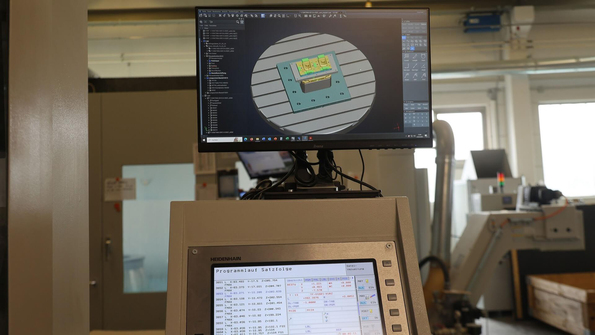
The clear and precise representation on the Tebis Viewer enables the specialist to implement the collision-checked setup plan easily and safely on the machine with the coordinates provided. – Image: Pergler Media
The design and programming team appreciates the intelligent functions Tebis provides. Having a virtual machine acting as a digital twin is an invaluable advantage, especially when dealing with a lot size of 1. "And Tebis is continually developing this important tool," says Nusser, who’s pleased with the latest improvements offered by the new Tebis Version 4.1. "Not one program is sent to our machines without having been collision-checked." At Hauk, the digital twin is based on the standard models from the machine manufacturers; the company's machines weren’t remeasured by Tebis. Within certain safety margins, this means that the CAM programmers can rule out the negative effects of any deviations between the real and virtual models. This is a factor that the tool and model makers accept.
New user interface for fast, convenient design
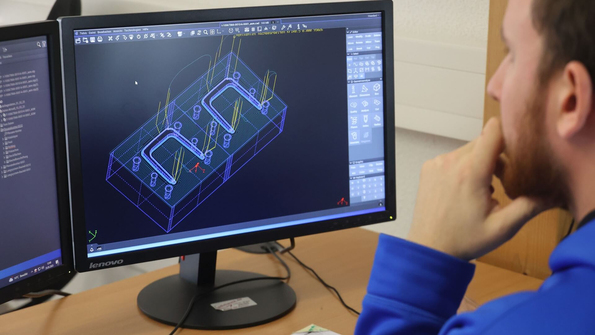
Version 4.1 provides a new user interface that simplifies design and programming. Duplicate entries are prevented, and handling is now simpler and more intuitive. – Image: Pergler Media
The new Tebis user interface is a significant improvement for the specialists at Hauk. "This access and user interface has greatly simplified parallel work on different projects," explains Nusser. "For example, individual elements can now be easily selected in the structure tree. In the current version, files, tools or entire NC subprograms can be easily "copied and pasted" from A to B, from one window to another and even to other projects. This saves a lot of time and mouse clicks. And it simplifies our daily work." Tebis enables surface-based work in the part data, and can also easily handle solid models. "These options are especially useful for us in contract manufacturing," the programming expert explains.
"For example, if our clients send us the CAD data for the parts to be manufactured in Catia or other CAD formats. Tebis enables a hybrid approach in this case. We can process and model the parts quickly and easily with the surface-based approach." This ensures simple and efficient processing, even using client-supplied data. But Tebis isn’t an isolated solution: Exporting data back to the client's systems is also seamless.
"For example, if our clients send us the CAD data for the parts to be manufactured in Catia or other CAD formats. Tebis enables a hybrid approach in this case. We can process and model the parts quickly and easily with the surface-based approach." This ensures simple and efficient processing, even using client-supplied data. But Tebis isn’t an isolated solution: Exporting data back to the client's systems is also seamless.
Jointly developing process strategies and guidelines
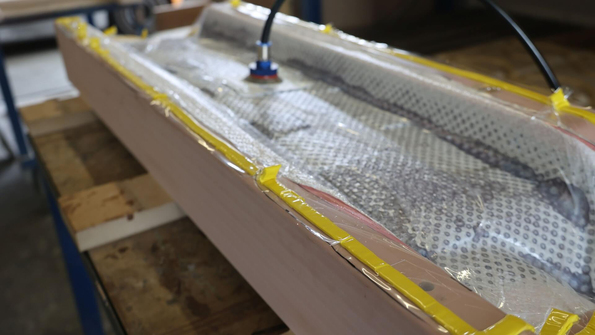
Parts made from carbon- and glass fiber-reinforced plastic composites, laminates and resin-densified wood aren’t uncommon at Hauk Modell- und Formenbau. The company specializes in several interesting fields of machining. The future lies in providing quality work for reasonable, sustainable clients. – Image: Pergler Media
Model and mold manufacturers are anticipating another major efficiency boost from the classification of workpieces and the resulting possibilities. "We want to take this on together with the Tebis experts in the future," says Nusser. "We're working with Tebis Consulting to develop the strategies and guidelines, and the specialists from the CAM process unit help us with implementation. We're hoping for another big breakthrough here." Ultimately, classified parts allow similar workpieces to be machined in a similar way. This requires strategies to be defined to determine how specific geometries will be machined. The more detailed the work of those responsible, the better and more efficiently Tebis can automate the programming of these parts.
Comprehensive libraries for automated programming
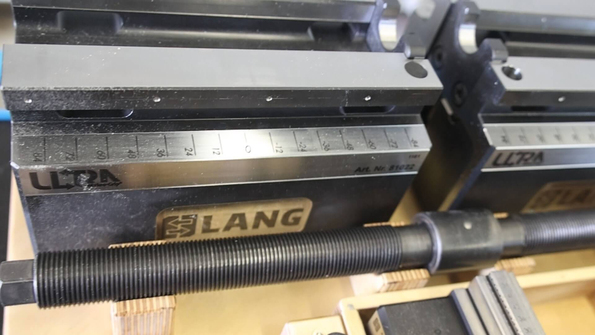
The programmers are currently creating their clamping device library. Lang’s stamping systems, along with specific fixtures, are precisely registered with all their relevant data. This simplifies tasks including programming and enables precise simulation. – Image: Pergler Media
Another important factor is the comprehensive libraries of machining tools that have adjustable parameters for a variety of materials, as well as the machine’s clamping devices and fixtures. The programmers at Hauk are currently establishing their clamping device library. Lang’s stamping systems, along with their specific fixtures, are precisely registered with all relevant data and geometries. Not only does this simplify programming, but it also allows for accurate simulation. "We can test setups virtually and optimize them as necessary before ever going to the machine," Nusser explains. "A well-maintained and detailed clamping device library lets us check various setup situations quickly and easily, and based on that we can make a well-founded decision on the optimal variant." And thanks to the representation in the Tebis Viewer, the specialists on the machine can safely and professionally implement the prepared setup plan using the specified coordinates.
Registering standardized tools with their cutting data
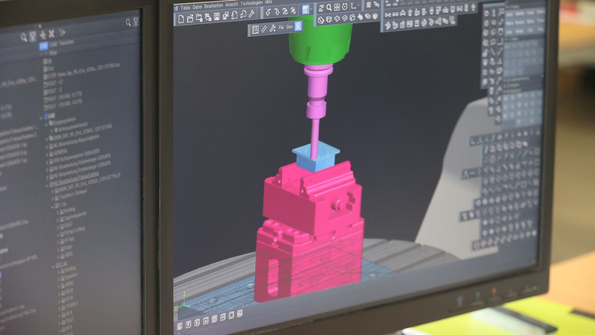
Not one program is sent to the machines at Hauk Modell- und Formenbau without having been collision-checked. At Hauk, the digital twin is based on standard models from the machine manufacturers; the company's machines weren’t remeasured by Tebis. – Image: Pergler Media
The machining tools are stored in libraries at Hauk Modell- und Formenbau. The tools used must be checked, standardized and then set up in the library with specific cutting data. Standardization is a challenge. While long projecting tools are often necessary in mold, die and model manufacturing due to factors including deep cavities, short tools are more in demand in series production. Key factors include designating a balanced set of tools that can cover all requirements. It’s no simple task to create the libraries. "But it pays for itself later in daily work," Nusser is convinced. "For example, the more precisely we describe the tools and clamping devices in the libraries, the better the automated programming can use the data. And the programs are then completed with correspondingly less reworking."
Template technology relieves the programmer of repetitive tasks
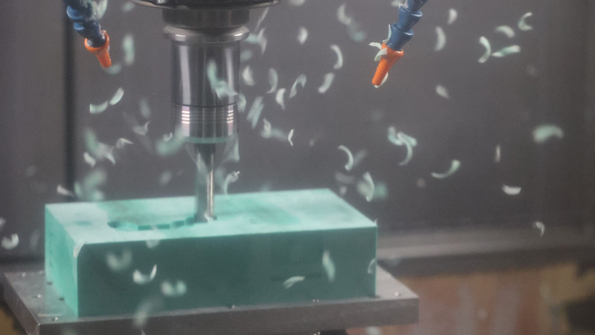
Model and mold manufacturing at Hauk have traditionally required plastic and aluminum materials. In individual cases, series production also introduced quenched, tempered and hardened steel grades on the machines. The requirements for programming and design have also changed. – Image: Pergler Media
The data allows for highly automated programming in Tebis 4.1 using Tebis template technology.
These sophisticated NC sets spare the programmer a significant amount of routine work. Tebis quickly and reliably recognizes geometry features from the designed parts. The programmer only has to modify the database parameters for the desired geometries, and the software does the rest. "Tebis software supports us in this, in series production in particular," Nusser explains. "Especially in our symbiotic approach that has a single person in our team doing both design and programming, it’s very easy to achieve the highest possible degree of automation using layers and colors.”
These sophisticated NC sets spare the programmer a significant amount of routine work. Tebis quickly and reliably recognizes geometry features from the designed parts. The programmer only has to modify the database parameters for the desired geometries, and the software does the rest. "Tebis software supports us in this, in series production in particular," Nusser explains. "Especially in our symbiotic approach that has a single person in our team doing both design and programming, it’s very easy to achieve the highest possible degree of automation using layers and colors.”
Customer orientation before, during and after implementation
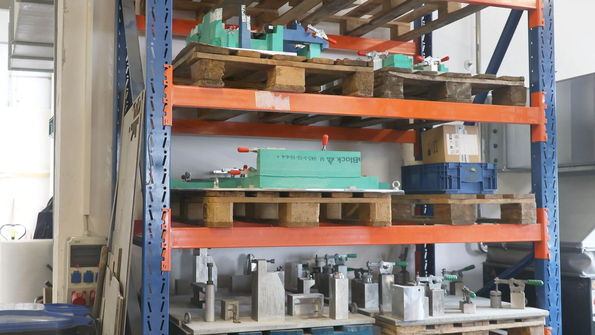
Clamping devices – Image: Pergler Media
The five designers and programmers at Hauk have experienced improved efficiency in systematic implementation, particularly with new features, thanks to their utilization of Tebis training programs. The designer and programmer expressed great satisfaction with the collaboration between Hauk and Tebis. "Tebis is always there for us when we have concerns, and they take us seriously as partners," he says.
"The contacts there are very easy to reach by phone, and emails are also promptly answered. Especially when we have pressing issues. Tebis is also well-acquainted with the challenges that our clients present to us. And the service experts are very motivated when working with us to provide a fast and optimal solution to our often highly specific challenges."
"The contacts there are very easy to reach by phone, and emails are also promptly answered. Especially when we have pressing issues. Tebis is also well-acquainted with the challenges that our clients present to us. And the service experts are very motivated when working with us to provide a fast and optimal solution to our often highly specific challenges."
Already 15% more efficient with Tebis 4.1
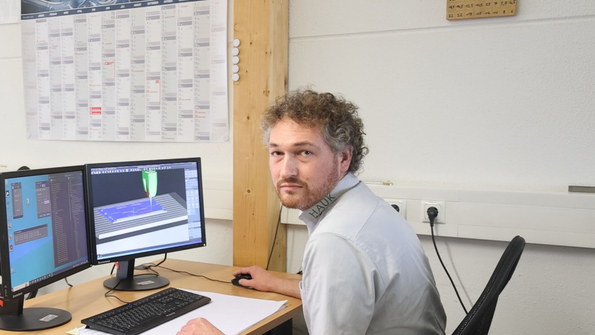
Karl Nusser, designer and programmer at Hauk Modell- und Formenbau: "Overall, we estimate that we’ve already improved efficiency by roughly 15% with the new features in Tebis 4.1, and there's certainly still room for improvement." – Image: Pergler Media
"Overall, we estimate that we’ve already improved efficiency by roughly 15% with the new features in Tebis 4.1," Nusser is confident.
"And there's certainly still room for improvement. Tebis includes other features that can help us represent the entire value-added process on the shop floor so we can draw valid conclusions for other project steps," says the designer and programmer.
"We’re currently focusing on the step-by-step vertical development of our software architecture in predefined work packages to avoid overloading the necessary resources for day-to-day operations. We’re continuing to focus on quality rather than quantity and on what we do best, so that we can continue as a competent, reliable and fast solution partner for our demanding and quality-oriented clients." Richard Pergler
"And there's certainly still room for improvement. Tebis includes other features that can help us represent the entire value-added process on the shop floor so we can draw valid conclusions for other project steps," says the designer and programmer.
"We’re currently focusing on the step-by-step vertical development of our software architecture in predefined work packages to avoid overloading the necessary resources for day-to-day operations. We’re continuing to focus on quality rather than quantity and on what we do best, so that we can continue as a competent, reliable and fast solution partner for our demanding and quality-oriented clients." Richard Pergler


